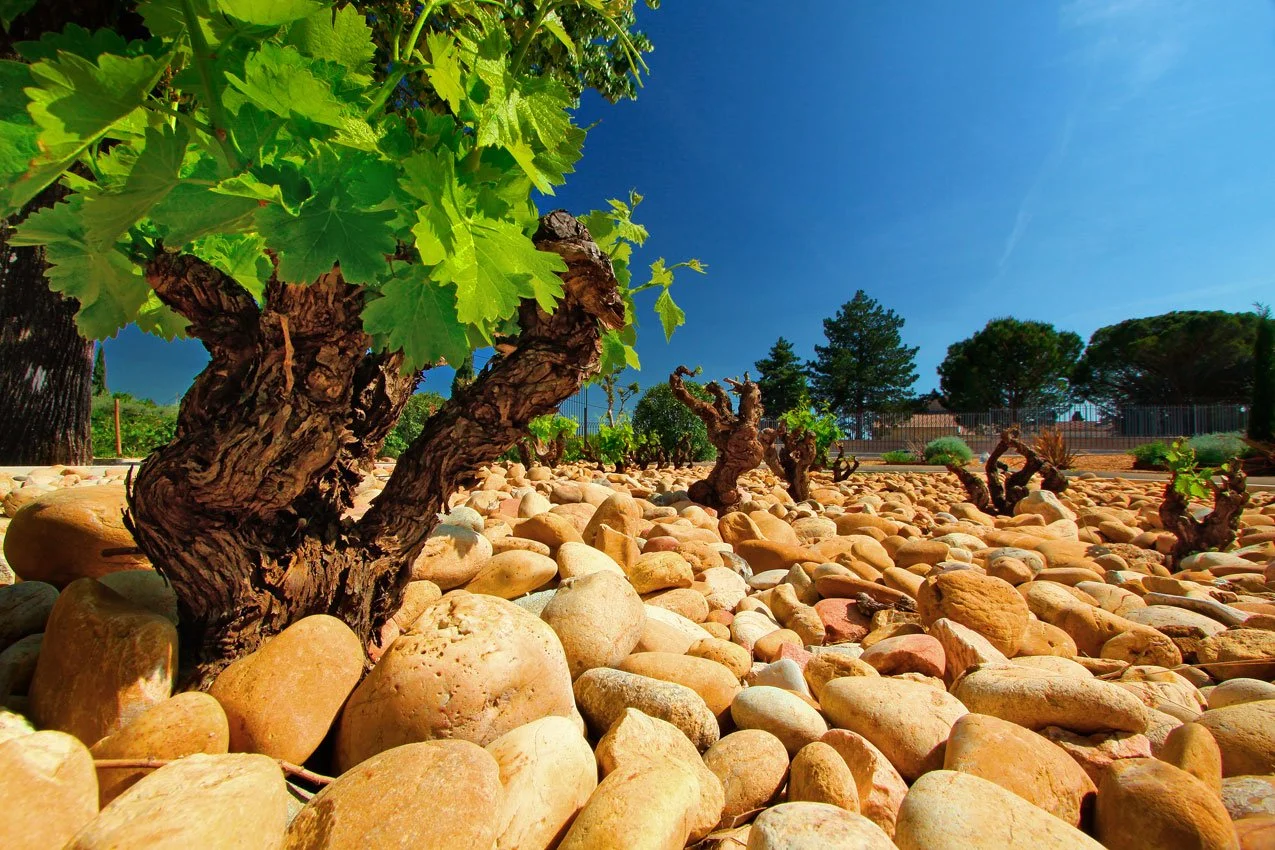The Wine of Popes ... and ET
The galets of Châteauneuf-du-Pape
Behind every great wine is a great story. One of my favourites? A tale of Popes, UFOs, and a wine so grand it warranted the creation of France's famous appellation system.
Intrigued? Read on.
Today we're taking a trip to the sun-kissed lands of southern France, where the Rhone Valley meets Provence. It's the region that gives us the quintessential French scenes of lavender fields, stately country homes and rustic villages.
It's also a region of France that drew much attention in the late Middle Ages. In 1309, Pope Clement V moved the Papacy to Avignon from Rome. He, and the six Avignon Popes that followed him, were quite partial to a glass of the local wine grown near their summer residence – Chateauneuf-du-Pape.
Et voilà! In the soil surrounding the Popes’ New Castle, one of France's finest wines was born.
While the modern-day village of Chateauneuf-du-Pape verges on quaint (25 km2 and a population of 2,000), the red wine which proudly bears its name can hold its own against the wines Bordeaux and Burgundy.
The wine became so prominent that, in the early 20th century, it was not uncommon for inferior wines from nearby vineyards to adopt the name in order to appropriate the prestige – and price – associated with a bottle of Chateauneuf-du-Pape.
In response to such unscrupulous folk, the local growers formed a syndicate to guarantee the provenance of their precious wine. Rules and regulations were created, outlining where the grapes were permitted to grow and how the wine was to be made. France's first AOC (Appellation d'Origine Contrôlée) was born and and this system of rules and regulations extended throughout France and to other countries in Europe They are still in existence today.
An impressive 13 varieties are allowed in the blend - 18 if you count the colour variations of noir, blanc, gris and rosé - but Grenache, Syrah and Mourvèdre are the most common - rarely are all 13 grapes included. There are, however, a few producers who manage to use them all. Look for wines from Chateau de Beaucastel if you’d like to taste a wine made from 13 varieties of grapes!
The 13 grapes of Châteauneuf-du-Pape
While the AOC took care of the problems caused by humans, winemakers may have believed that an even bigger threat came from the far reaches of the universe.
One of my favourite quirky wine stories comes from this region. In 1954 the mayor of Chateauneuf-du-Pape passed a law forbidding UFOs and flying saucers from landing, taking off, or even entering the airspace of the village's precious vineyards. It's a law which still stands today.
Some of the famous names of the appellation are Guigal, Chapoutier, Chateau de Beaucastel, Vieux Télégraphe and Château La Nerthe.
Braised Lamb
Chateauneuf-du-Pape is a hedonistic wine – red and black cherries, kirsch, strawberries, and black raspberry combined with pepper, spice, earth, and herbs (known as garrigue). It is juicy and delicious. The wine is full-bodied and intense when young but mellows and becomes smooth and silky with age. Try it with braised lamb with rosemary and garlic.





